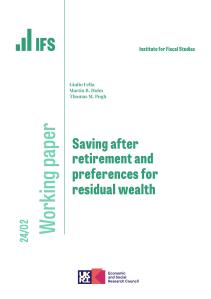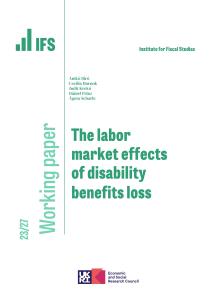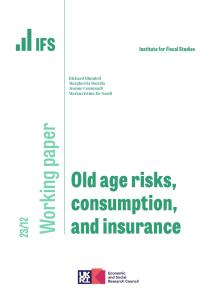Do people rage against the dying of the light or do they go gently into that good night? Translating Dylan Thomas: as people age, do they continue to participate actively in work and social life, retain health and function for substantial periods, or do they subside, go gently, into inactivity, decline and eventual death?
There are two types of questions here: what policymakers, politicians and social commentators think people should do - subject of much current debate; and what people actually do. A key purpose of ELSA (the English Longitudinal Study of Ageing) is to discover what people aged 50 years and above do, and are able to do, in areas that are of great interest to all of us whether policymaker, researcher, commentator or simply interested citizen: work, spending, health and receipt of healthcare, social participation, cognitive ability. A second major purpose is to go beyond description of what people do to discover why - to seek explanations for which people have good trajectories in older age and which less good. Without such understanding, it is hard to see how policies could be designed to make things better.
In our first report from ELSA (Marmot et al., 2003), following the first wave of fieldwork in 2002-03, we drew attention to the great diversity in health, physical, social and psychological functioning and economic fortunes in the population. We hoped that results from ELSA would do much to contradict the picture of older age as a time of inevitable decline. In this second report, following the second wave of fieldwork in 2004-05, we fill out the picture further. In particular, we examine an important aspect of diversity: how each of the areas covered by ELSA varies according to people's level of wealth.









